What Is Expressionism In Art?
by David Fox
Expressionism is one of a number of art “isms” from the early 20th Century.
The movement developed between 1905 and the 1920s and reflecting a number of crucial themes. Artists were deeply concerned about the state of the world and modern city life.
Despite having some doubts about Modernity, artists were still captivated by the more “immoral” activities of modern life.
Later Expressionist work responded to the aftermath of World War I and its devastating effect on humanity. Most Expressionists were German, although other artists worked out of Russia, Norway, Czechoslovakia and Austria. The movement was adopted in film, music, art and architecture.
Directors like Robert Weine and Fritz Lang used Expressionism in their set design, costume and marketing.
Here’s Robert Weine’s film “The Cabinet Of Dr. Caligari” from 1920. As you will see, the aesthetic of expressionism hints at darker themes, and traces of madness and illusion.
With expressionist architecture, there was a similar leaning as with film in that architects were concerned with new forms, innovation, but also a certain oddness that permeates some of the greatest works.
Architects like Bruno Taut and Erich Mendelsohn also began to explore Expressionism, creating two of the most iconic works of the day.
Perhaps you are familiar with Bruno Taut’s “Glass Pavilion” from 1914 (shown below).

…or Erich Mendelsohn’s The Einstein Tower…
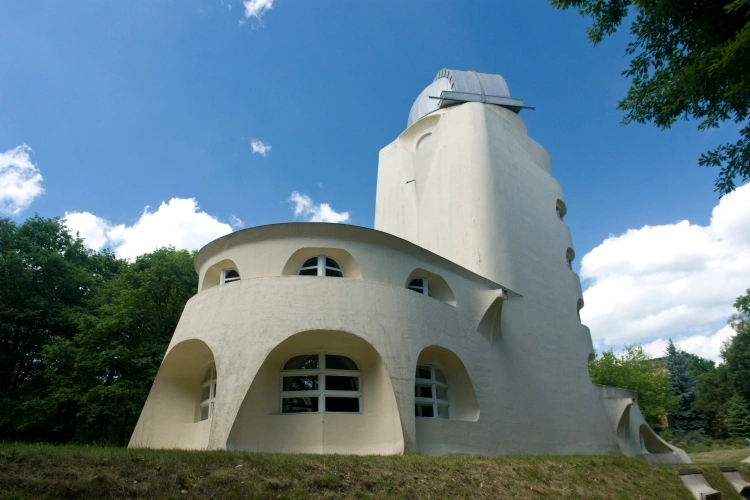
At the turn of the century, a shift in style lead Expressionists to reject Impressionist ideas.
Where Impressionism was a more optical response to art, Expressionist art became more visceral. These artists wanted to capture more than mere fleeting moments in time.
They set about placing spirituality and authenticity back into art.
With Claude Monet’s famous “Bridge Over A Pond Of Water” from 1899, we see an artist who is attempting to visually capture the essence of a place, using light and color, and is arguably the opposite of the type of more symbolic and deeply personal work that the Expressionists would explore not long after this time.
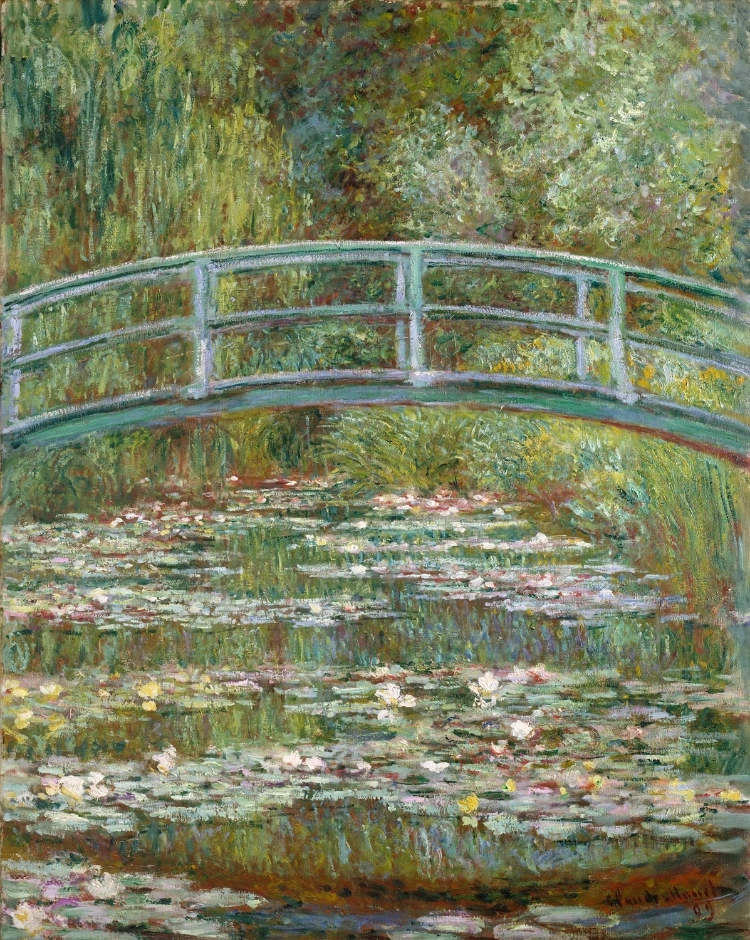
This desire to look “inward” began around 1890. Post-impressionists like Paul Gauguin, Paul Cezanne and Vincent van Gogh questioned Impressionism’s need to only paint what they saw. Instead, they considered emotions, memories, and their background in order to connect to viewers on a deeper level.
By using colour and shape they expressed how they felt about the world around them. Paintings became more abstracted than before, and the artists started to look at the way paint was applied to the canvas surface.
Take a look at Paul Cezanne’s “Les Joueur De Cartes”, from 1892-95.

So how did the Expressionists set about making their work feel more authentic? One way was to look at different cultures displayed in museums and at world fairs.
Primitive art from both Oceania and Africa influenced the painting of faces and bodies.
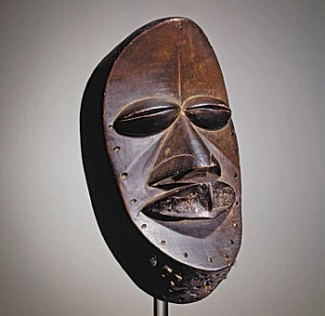
Another way Expressionists made their art more “real” was by tapping into the intensity of their own emotions. Expressionism became an intensely personal body of work for these artists.
Artists began to express their own reactions to the world with swirls and vigorous brush strokes.
New technology and massive urbanization altered peoples’ worldview, and the Expressionists were no exception. This migration to the larger cities brought new social problems that artists showed in their work.
New Schools For Artistic Expression
New schools of creative thought also emerged.
Die Brücke (The Bridge) was formed in Dresden in 1905 continuing until 1913. The renowned artist Ernst Ludwig Kirchner became the group’s spiritual conscience, and insisted on artists expressing their inner thoughts.
The work produced in Dresden mashed German art and Primitive African art with post-impressionist and fauvist influences.
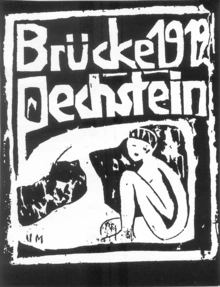
Other shared studios emerged in Berlin and Munich. Der Blaue Reiter (The Blue Rider, 1911-14) was named after Kandinsky’s painting that graced the cover of the group’s manifesto.
The school was established in Munich during 1911 where August Macke, Paul Klee and Franz Marc were major contributors .
These artists would become some of the most important artists of the movement.
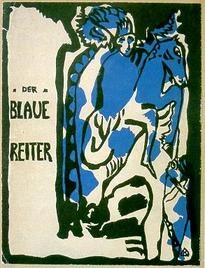
New Objectivity
The third key group of Expressionists ran out of Berlin.
The New Objectivity movement included Otto Dix and George Grosz who added a strong sense of Realism to their art. Their work was often satirical, commenting on wartime and post-war corruption.
This resignation and cynicism is seen in both Dix’s and Grosz’s works. Their “visual commentary” was aimed at the fruitlessness of World War I, and those who profited from the war.
Certain common characteristics are found across most Expressionist work. When you find yourself looking at any Expressionist work consider:
- Expressionists were more spontaneous than other movements, and this is seen in the wildness of the brush strokes of many artists.
- Colour – strong, vivid colours were used in much of the work, linking Expressionism to the Fauves’ use of intense colour.
- Urban subject matter – including responses to migration, and the changes in technology and society at the time. The Expressionists has much to draw upon!
- Objects were painted from an emotional inner sanctum. The artist drew upon this powerful emotion, often at the sacrifice of accuracy.
- Figures and objects were often distorted and exaggerated (like that found in Oceanic and African Primitivist artefacts).
- The importance of achieving harmony of forms was less important. Instead Expressionists concentrated on the highest intensity of expression possible
- Swirls and the exaggeration of brush stroke create a sense of agitation. These techniques add to the vivid, jarring, distorted and exaggerated appearance of these works.
- Extreme angles
- Flattened forms
Themes -The City, Modernity and Alienation

The urban landscape of the early 20th Century became food for thought for some Expressionists.
They started to paint their own reactions to the troubles of the modern world. These “painted social criticisms” of Modernity, highlighted the alienation of individuals who lived within the city.
This was seen in paintings by artists like George Grosz. His work commented on the social decay, alienation, and the corrupting force of Capitalism.
Grosz’ paintings of prostitution for example, are visual commentaries on this social and moral decay.
Expressionist Works
Here is a selection of key Expressionist artists and their works. There are many great Expressionist paintings out there. Unfortunately, there are too many to show here.
This is a small representative sample of different artistic styles from leading artists who worked within this movement.
Oskar Kokoschka – The Tempest (The Bride of the Wind), 1914
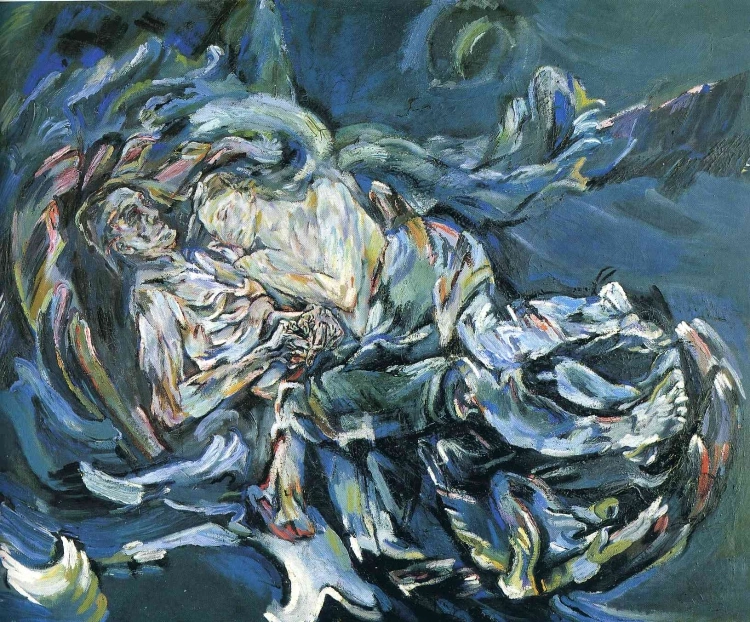
(Characteristics: swirling forms, strong colour, spontaneous and exaggerated brush strokes, intensity of expression, flattening of forms)
Ernst Ludwig Kirchner, Deutsch: Nollendorfplatz, 1912
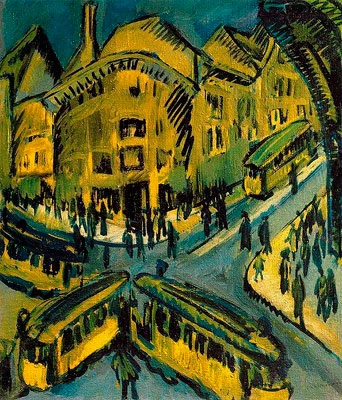
(Characteristics: use of colour, the city as subject, strange distorted angles, exaggeration, flattening of the space)
Also by Kirchner is “Street, Berlin” from 1913…
(Characteristics: use of vivid colour, the city as subject, dense angular forms, flattened forms, influence of primitivism, jagged strokes, urban subject matter – a Berlin Street, including prostitutes)
Emile Nolde, A Long Time
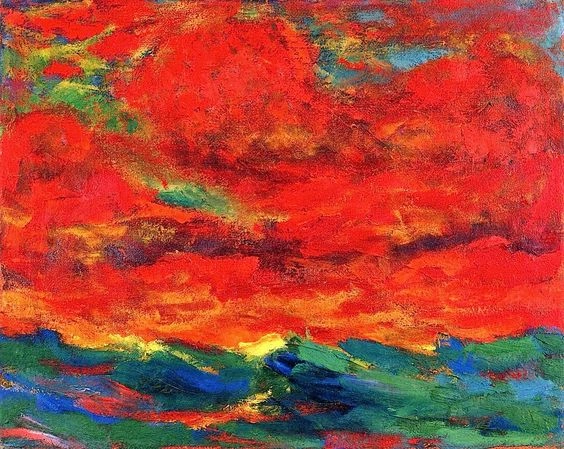
(Characteristics: use of vivid colour, expressive vigorous brush stokes, flattened forms)
Emil Nolde, The Prophet, 1912
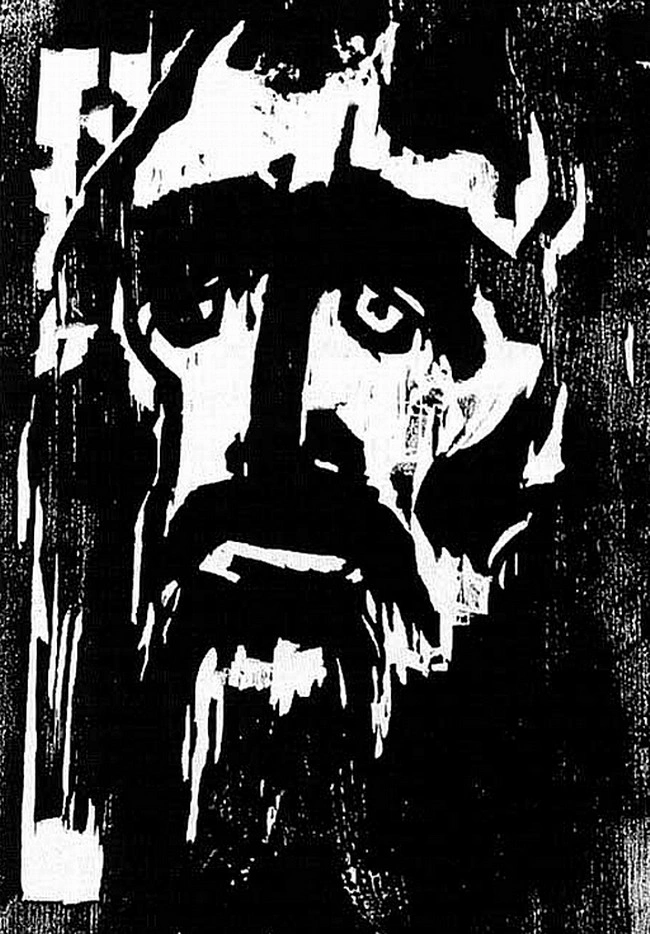
(Characteristics: the use of the wood cut was often used in Expressionist work. Jagged and distorted angles, Primitivism – a mask-like face, intense emotional impact- shown in the sunken eyes and hollow face, flattened form)
Wassily Kandinsky, Munich Schwabing Church of St Ursula
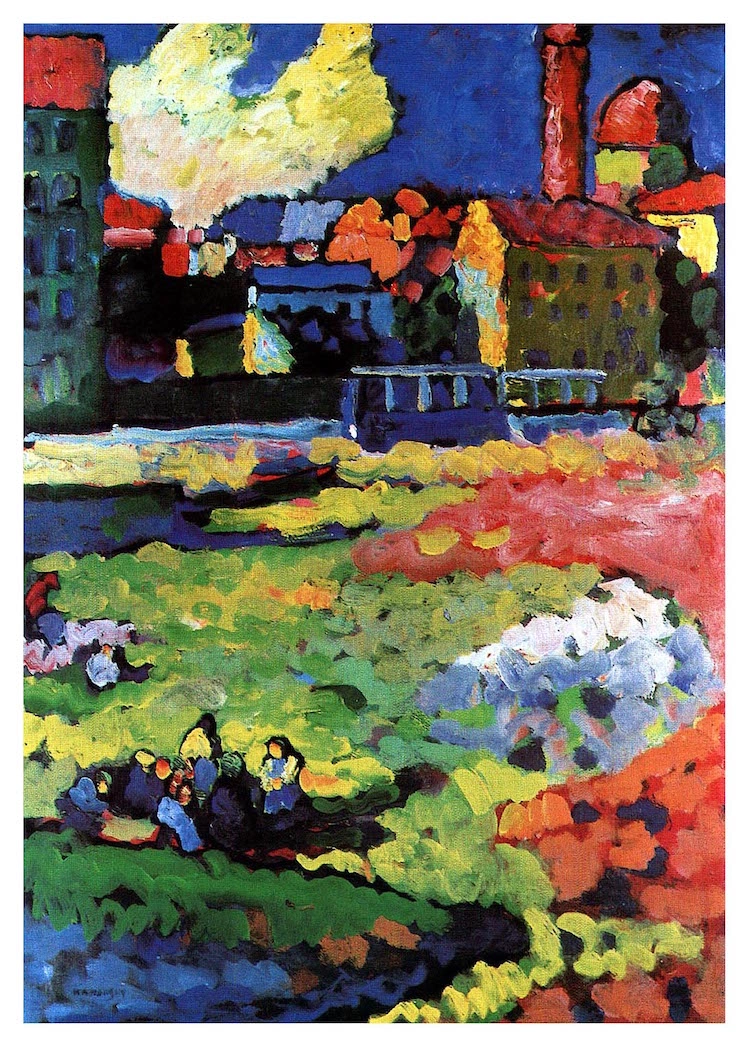
(Characteristics: vivid strong colours, jagged angles of the buildings, flattening of form, spontaneous brushwork, urban subject – the factory and modernity)
Wassily Kandinsky, Concert
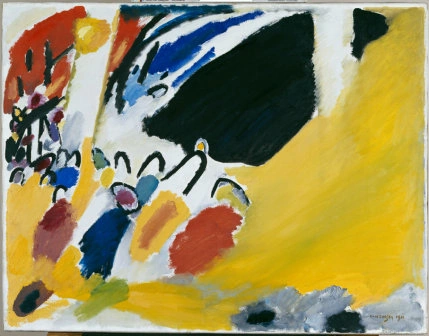
(Characteristics: Clear use of bold vibrant colours, flattened space, expression of intensity, exaggeration of brush strokes)
August Macke, St Mary’s with Houses and Chimney, 1911
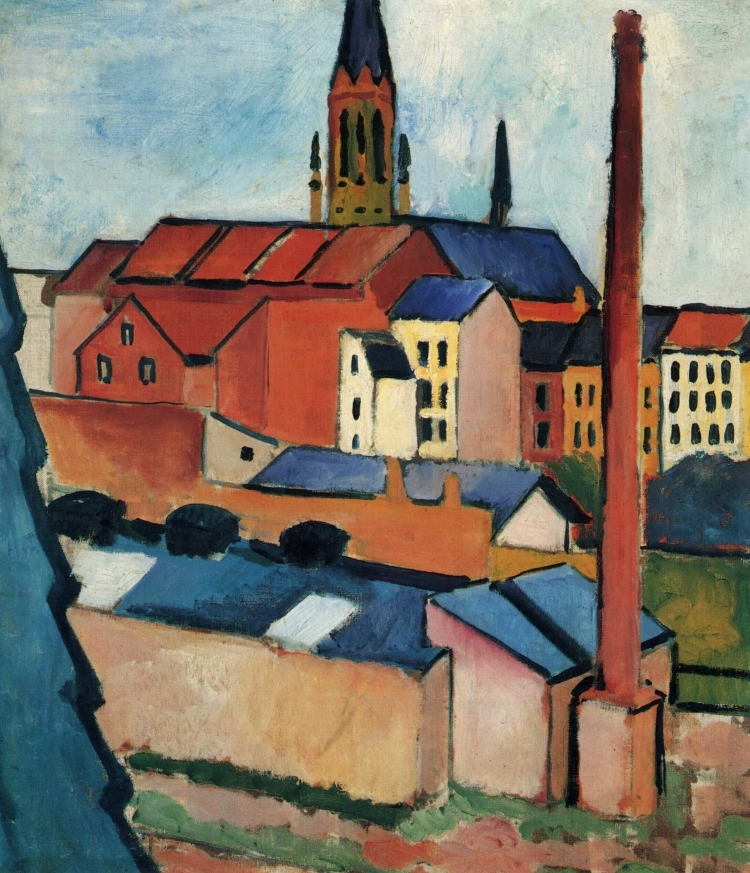
(Characteristics: strong use of colour, urban subject matter, distortion flattened forms, angular)
August Macke, Promenade, 1913
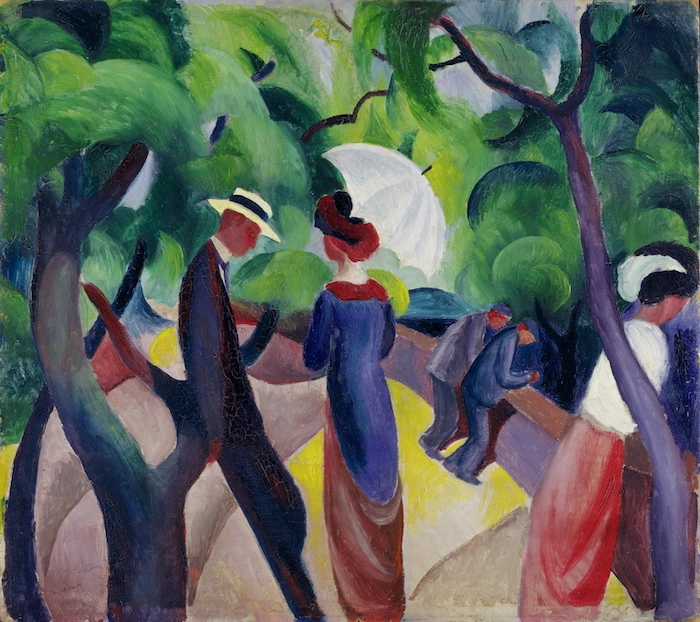
(Characteristics: flattened forms, distortion, bold and vivid colours, urban setting (walking in the Gardens), swirls and exaggerated brush strokes)
Franz Marc, The Large Blue Horse, 1911
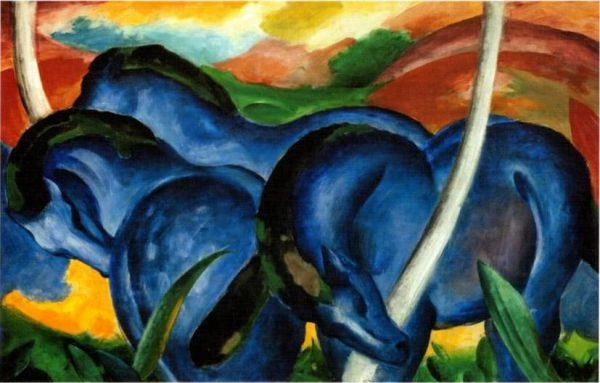
(Characteristics: bold vibrant colours- purples reds pinks oranges and yellows, swirling motion of brush)
George Grosz, Suicide, 1916
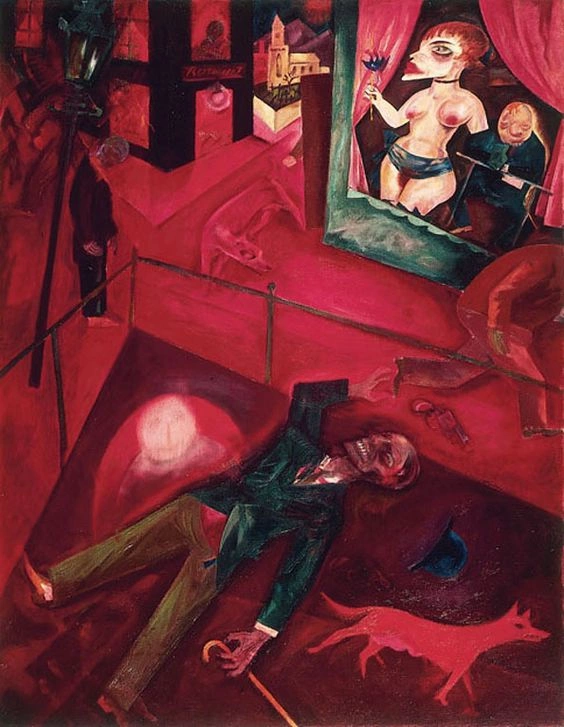
(Characteristics: Urban setting (alienation of his work seen in the dead man and the prostitute), vivid strong colours, extreme angles, flattened forms, jagged jarring and distorted)
George Grosz, Explosion, 1917
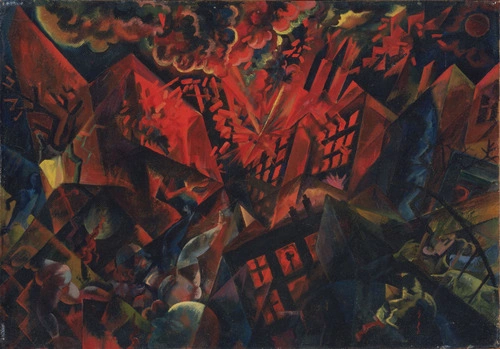
This painting is also influenced by the Italian Futurists who were trying to capture the speed and violence of the city.
(Characteristics: Urban setting, vivid strong colours, extreme angles, flattened forms, jagged jarring and distorted)
Otto Dix, Picture of the Journalist Sylvia von Hardern, 1926
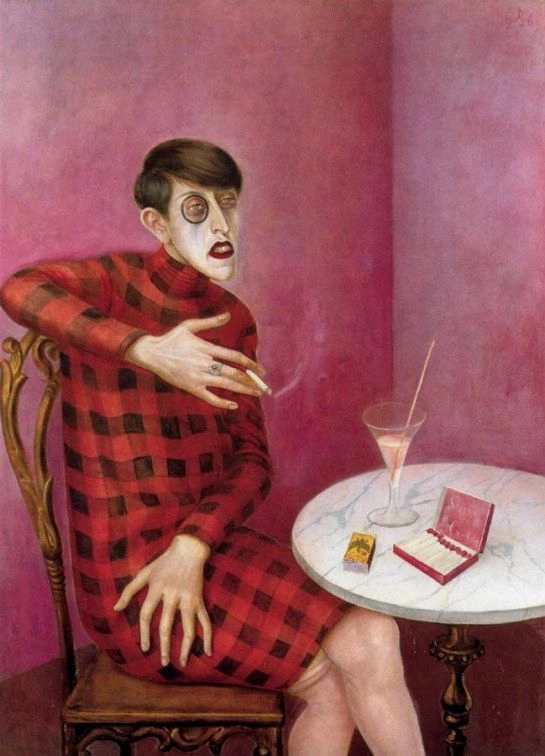
(Characteristics: Urban subject- journalist, flattened figure, distortion(face) and Primitive mask-like quality, intense use of strong colour, exaggeration of form (hands))
Other Expressionists worth investigating include: Marc Chagall, Max Beckmann, Lionel Feininger, Paul Klee, Max Pechstein, and Czech Alfred Kubin …
Expressionism’s Power To Influence
Expressionism inspired the work of new generations of expressionists in the second half of the Twentieth Century, namely Abstract Expressionists and Neo-expressionists.
Abstract Expressionism (AbEx)
Abstract Expressionism surfaced in the USA around 1945 and was particularly strong in New York during the post war period. The emotional outpourings of the artists have often been linked to the feelings of disillusionment, and horror, experienced after two world wars.
Mark Rothko, Light Red Over Black, 1967

Characteristics & Background
- Developed in the U.S. that had now become the centre of avant-garde art in the world.
- included work by Jackson Pollock, Willem de Kooning and Mark Rothko, amongst others
- lack of defined figures
- very gestural strokes of the paint brush, linked to earlier Expressionism
- use of colour an essential part of the work
- divided into colour-field painters, (Mark Rothko and Barnett Newman) and the more gestural works (Jackson Pollock and Willem De Kooning)
Willem de Kooning, Woman I, 1952
Characteristics & Background
- Rooted in German Expressionism and hit the world stage during the 1970s
- Movement include US artists but also German, Italian and French artists
- Revival of formal elements of both Expressionism and AbEx
- Re-establishing subjectivist approach and the return to more personal expression by the artist
- Flashy textural brush work and distorted figures re-emerge for the Expressionist movement
- Works by Julian Schnabel and Anselm Kiefer, Gerhard Richter and Francesco Clemente in particular
Gerhard Richter, Abstract Painting (809-4),1994
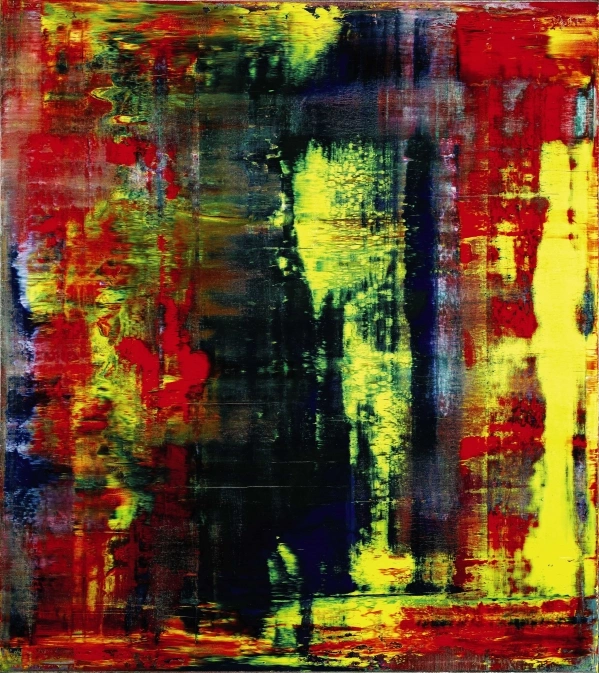
Read our article, https://davidcharlesfox.com/comparing-abstract-expressionism-pop-art/

About David Fox
David Fox is an artist who created davidcharlesfox.com to talk about art and creativity. He loves to write, paint, and take pictures. David is also a big fan of spending time with his family and friends.
Leave a Reply
 |
 |
 |
 |
Just Art and Fun
Now get FREE Gifts. Or latest Free phones here.
Disable Ad block to reveal all the secrets. Once done, hit a button below
 |
 |
 |
 |